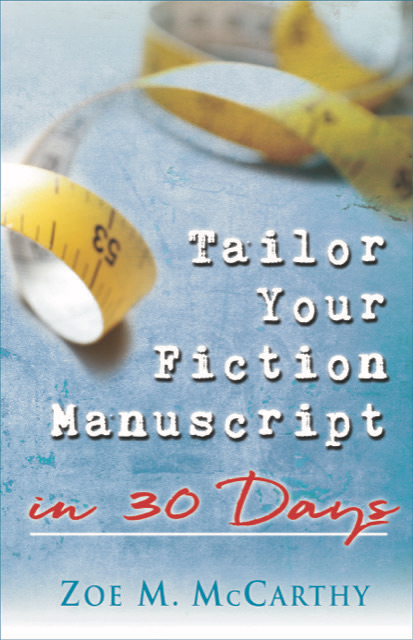

Zoe has developed a guiding resource for beginning writers. Her method is designed for brainstorming, shaping, and revising an early draft of a manuscript. General and specific tips are offered for applying rules of writing to enhance one’s story for a workable second draft. By exploring the plot line of Love Comes Softly writers may examine their own work for stronger plot and characterization. Valuable tools are offered that enable the writer to develop a workable draft in 30 days! —Yvonne Lehman, award-winning, best-selling author of 48 novels
Learn more at the end of the post.
Definition of a Beta Reader
Beta readers review completed, unreleased manuscripts and provide the author helpful feedback concerning what works and what doesn’t.
Below are several questions to choose from to ask your two to five beta readers.
What May Not Work
Character issues:
- Was there a main character(s) you didn’t like? Who and why?
- Did any main character seem flat or like a cliché? Who?
- Did two characters sound too much alike in dialogue and mannerisms? Who?
- Could you identify character growth in the protagonists? What was the growth?
- Were protagonists’ main goals clear? What were their main goals?
Confusion:
- Were there scenes, paragraphs, sentences, or words you couldn’t understand what they conveyed? Where?
- Did scenes leave you confused because vital information was missing or came too late? Which scenes?
- Were there instances when you didn’t know who was talking? Where?
- Were there scenes you didn’t immediately know whose point of view was used, where the characters were, or when the events were occurring? Which scenes?
Readability
- Where were words used incorrectly?
- Were there sentences you had to read twice or seemed odd? Where?
- Did some areas not flow well? Where?
Conflicting information:
- Were character or setting elements different in later scenes? (Eye color changes. The sectional in the living room later becomes a settee.) Where?
- Did you spot unintentional reversals in dialogue or narrative? (Chapter 1: She loved walking through forests. Chapter 10: Her terror of forests prevented her from following Paul.) Where?
Inappropriate pacing:
- Were tense scenes or dialogue too slow? Where?
- Were laid-back scenes or dialogue too fast? Where?
- Where did the story sag?
Boring Areas
- Were there passages that included too many explanations or unnecessary details? Where?
- Were there scenes or areas having nothing to do with moving the story forward. Where?
Insufficient world building:
- The world may be different than Earth, but where did the world’s life system not make sense or was inconsistent?
Insufficient research:
- Where did facts about places, things, or people seem questionable?
Setting issues:
- Were there places in which the characters seemed like they were in a vacuum?
- Were there scenes in which characters don’t react to or sense their surroundings? Which scenes?
Optional:
- Were there grammar problems? Where?
What works
Characters:
- Did you have a favorite character? Why?
- Were there moments when a character’s actions touched you? Where and how?
- Did a character’s growth over the story reveal or affirm satisfying truths to you? Which characters and what were the truths?
Suspense:
- Did you have unanswered questions in which you looked forward to learning the answers? What were your questions?
- Were the revealed answers to your questions satisfying? Why?
Ease in reading:
- Were there places you got caught up in the story? Where?
Ending:
- Whether the book is part of a series or a stand-alone novel, did you find the ending satisfying? Why or why not?
Reactions:
- Were there parts you particularly enjoyed? Where?
- Were there places you laughed or felt tension, sadness, or joy? Where?
- Was there something new you learned? What?
What other question would you ask a beta reader?

I finished reading Tailor Your Fiction Manuscript in 30 Days. I have AND will highly recommend it to anyone who dabbles in fiction. It’s one of the best “how to” books I’ve ever read.
—Marsha Hubler, Director Montrose Christian Writers Conference
If you want to increase your chance of hearing yes instead of sorry or not a fit for our list at this time, this book is for you. If you want to develop stronger story plots with characters that are hard to put down, this book is for you. Through McCarthy’s checklists and helpful exercises and corresponding examples, you will learn how to raise the tension, hone your voice, and polish your manuscript. I need this book for my clients and the many conferees I meet at writer’s conferences around the country. Thank you, Zoe. A huge, #thumbsup, for Tailor Your Fiction Manuscript in 30 Days.
—Diana L. Flegal, literary agent, and freelance editor
Tailor Your Fiction Manuscript is a self-editing encyclopedia! Each chapter sets up the targeted technique, examples show what to look for in your manuscript, then proven actions are provided to take your writing to the next level. Whether you are a seasoned writer or a newbie, you need this book!
—Sally Shupe, freelance editor, aspiring author
Need to rework your book? Zoe M. McCarthy’s step-by-step reference guide leads you through the process, helping you fight feeling overwhelmed and wrangle your manuscript into publishable shape in 30 days. Tailor Your Manuscript delivers a clear and comprehensive action plan.
—Elizabeth Spann Craig, Twitteriffic owner, bestselling cozy mystery author of the “Myrtle Clover Mysteries,” the “Southern Quilting Mysteries,” and the “Memphis Barbeque Mysteries,” http://elizabethspanncraig.com/blog/
Zoe’s book, Tailor Your Fiction Manuscript in 30 Days, is a fresh and innovative refocusing of your novel or novella. Through a few simple—and fun—steps, Zoe helps writers take their not-ready-for-publication and/or rejected manuscripts to a spit-polish finish. Writing is hard work, yes, but it doesn’t have to be difficult.
—Eva Marie Everson, best-selling and multiple award-winning author, conference director, president of Word Weavers International, Inc.
Tailor Your Fiction Manuscript in 30 Days is chock-full of practical techniques. Numerous examples clarify problem areas and provide workable solutions. The action steps and blah busters McCarthy suggests will help you improve every sentence, every paragraph of your novel. If you follow her advice and implement her strategies, a publisher will be much more likely to issue you a contract.
—Denise K. Loock, freelance editor, lightningeditingservices.com
A concise, detailed, step by step resource for all writers.
— Jamie West, editor coordinator, Pelican Book Group
Zoe’s writing blog has always intrigued me. As a high school English teacher, I can attest that her tips on good grammar and her hints for excellent sentence and paragraph structure are spot on. But as an author, I also appreciate her ever-present advice that excellent skills are not enough: you must tell a good story, too. This book clearly shows how to do it all.
—Tanya Hanson, “Writing the Trails to Tenderness,” author of Christmas Lights, Outlaw Heart, Hearts Crossing Ranch anthology, and coming in 2019, Tainted Lady, Heart of Hope, and Angel Heart. www.tanyahanson.com
McCarthy crafted an amazing self-help book that will strengthen any writer, whether new or seasoned, with guidance and self-evaluation tools.
–Erin Unger, author of Practicing Murder, releasing in 2019





 RSS - Posts
RSS - Posts



So timely. Thank you. Can’t wait to pursue a manuscript to ask helpful questions.
With your experience, Marcia, I think you’ll be a great beta reader.
Great questions, Zoe!
Good luck and God’s blessings
PamT
Thanks for stopping by, Pam. I know you’re a busy lady.
Wow, Zoe, a friend and I were talking about this just the other day. You have provided a wealth of information! Thank you so much!
You are welcome, Patti. I’m glad you found the information helpful.
Perfect timing for me to see this blog. I am going to be a beta reader for the first time this month.
I’m glad the post will be helpful to you, John.